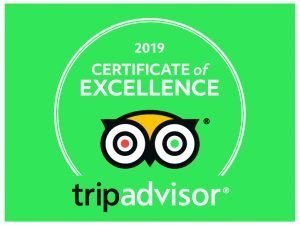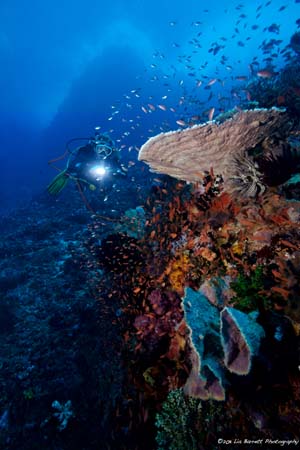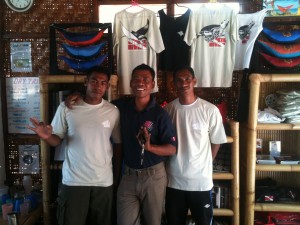
Komodo Dragons, just the idea of seeing the largest living lizards can trigger a sense of awe in most of us. However, thinking of Komodo National park as nothing more than the dragons vastly underestimates the beauty of the region. Featuring some of the most exotic and diverse marine environments on earth as well as thrilling dive sites – Komodo Diving is unlike anything you’ve ever encountered. Manta Rays drift by while we stare at pygmy seahorses. Sharks and Dolphins predate on the vast schools of fish that thrive in these rich waters where the Pacific and Indian oceans meet. Or step in for a drift dive faster than any you’ve ever experienced!
Our Komodo liveaboard always has small groups, great diving and much more. You can join for short trips of 7 days journeys through the park. Our maniacal focus on safety always
Our Komodo Dive Center

The park is vast, and blessed with many small islands, the large islands of Komodo, Rinca and Padar also have dozens of small bays and coves which mean there are literally hundreds of dive sites. Some of these coves plunge down into the depths with steep walls of coral, some feature rivers mouths and low-viz muck diving, others are home to huge fields of seagrass where we encounter Dugongs grazing, while some are little underwater valleys straight out of diving heaven. Then come all the small islands – some no more than simple seamounts surrounded by schools of fish numbering in the hundreds of thousands. Here we often find the apex predators like the 6 commonly seen species of sharks – but don’t fear these are all non-threatening to humans and view us with nothing more than passing curiosity as there is sooooo much other marine life for them to feast on!
The channels between the islands (the Lintah Strait) is famous for it’s currents. where the Indian and Pacific meet, the entire tidal flow of an ocean pass through each day. This also means the most convenient place for migratory species to move between the seas. A large number of Whales have been seen here (not underwater…not yet), 5 of the 6 species of sea turtles pass through, plus hundreds more. These currents also mean the freshest waters and rich plankton from the depths of the cool Indian ocean keep the corals and reef fish very well fed and healthy! Komodo diving trips offer some of the strangest mix of species found in one place and an almost never ending variety of things to see.
Over the course of a season (March-December) we move our dive sites due to changes in currents and water temperatures. October-December finds us diving mostly in the south of the park where cooler waters prevail and the reefs are markedly different. From Mach – October we tend to stay in the Northern part of the park. Our Komodo diving day trips are much shorter – meaning you can enjoy the famous Labuan Bajo sunsets.
With the changes in seas, currents and conditions – we can’t emphasize how important safety and standards are. All diving should be safe, but extra caution and attention needs to be paid to your own well-being here. The Komodo diving community has rapidly changed over the past few years and there are still “cowboy” operators who lack even the most basic safety items. It is uncommon for dive boats to even have oxygen!!! Please, please, please…be very cautious with whom you book and how. It can’t be stressed enough that the whole park can be dived safely, but it takes experience, wisdom and eye to safety to do so – a single poor decision here can be fatal.
From the giant lizards roaming the beaches to the vast reefs underwater, our Komodo liveaboard brings a whole new ethos to a region populated with super-luxury boats and decrepit backpacking “boats”. We operate with a constant emphasis on low-impact and safety-focused dive operations. Leading this is our internship program – starting with the villagers from Komodo Island. Turning from the extractive fishing practices of the past, we have taken several young fishermen and trained then as dive guides. They are not only earning a steady income (one much larger than fishing ever offered) but inspiring others from the village in finding ways to sustainably support themselves and their families.
Best Time to Visit
The most common months to visit our Komodo dive center are June, July and August.
History
Komodo National Park was established in 1980 and was declared a World Heritage Site and a Man and Biosphere Reserve by UNESCO in 1986. The park was initially established to conserve the unique Komodo dragon (Varanus komodoensis), first discovered by the Western world in 1911 by J.K.H. Van Steyn. The region is rich in history and has been a major trading crossroads for more than 2 millenia and possibly longer.

One of the biggest changes occurred in 2013 when the entire park was declared a Manta Ray and Shark protection area!! This was more than 7000Sq Km declared off limits. This huge step was initiated by just a few local dive shops and divers like you! We collected data on our encounters with Manta Rays as well calculating the amount of income derived from trips like Manta Ray research liveaboards and the government understood that tourism brings in much, much more revenue to the local economy than extractive fishing practices. This is only the second Manta Ray protection zone in Indonesia and one of a handful in the world.
Komodo Diving opportunities keep coming – new sites are often explored and named.
Weather
The climate here is tropical, averaging nighttime 23c (73f) to 30c (86f). While many expect the equatorial location to be all jungle – it’s actually quite dry compared to the rest of Indonesia. The wet season is shorter – December to March, so only 4-5 months of the year is Komodo properly green. The rest of the year the islands in the park look far more like savannah! The humidity is also rather low and makes for very cool evenings – so blankets can be needed!!!
The rest of the year the seas are generally calm and the winds offer a cooling breeze. Of course, like anywhere else on the sea, you simply never know what to expect. Plan your Komodo dive trips accordingly.
